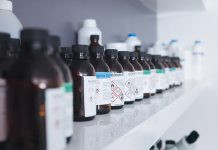Dr Marina Fuentes
REACHReady Technical Advisor
31 May 2018 will see the end of the last REACH registration deadline. This deadline signifies the expiration of the phase-in period for registering ‘existing’ substances. In other words, it brings an end to the transitional arrangements that allowed companies who pre-registered to continue import and manufacture of substances and register at a later stage. Furthermore, the phase-in period only applies to those substances listed in EINECS and those which were manufactured, imported or placed in the EU market and notified under the Dangerous Substances Directive prior to the entry into force of the REACH regulation in 2006.
Therefore, any substances not meeting the phase-in criteria, and those ones which weren’t pre-registered could not benefit from the transitional arrangements mentioned above. These so called non-phase-in substances need to be fully registered before manufacture or import activities begin in the EU in quantities equal or above 1 tonne per calendar year. The same applies to any phase-in substances that aren’t registered by the May 2018 deadline.
Hence, the REACH 2018 deadline does not mean, by any means, the end of REACH. This article will look into further obligations related to registration, as well as other provisions of REACH, post-May 2018, as these should not be underestimated. A short paragraph is dedicated at the end to chemicals regulatory obligations in the UK post-Brexit.
Registration obligations outside the 2010, 2013 and 2018 deadlines
Changes of legal entity: mergers, acquisitions, transfer of assets
Registration obligations affect business changes such as mergers and acquisitions. Any business change that results in a legal entity change will require updates of existing registrations in order to allow for continuity of manufacturing and importing operations. Even a small acquisition can bring a significant workload as well as costs. Let’s look at the following example where a legal entity is split into two or more entities:
Company A merges with company B to form company C. Company C has too much capacity so they must sell part of the assets of company A to gain permission from the EU competition authority. Hence, the former Company A splits into Companies A1, A2 and A3, with A2 and A3 put up for sale. If A1, A2 and A3 make the same substance then there is only one registration and three legal entities needing it: hence A2 and A3 need to submit inquiries to ECHA, after first establishing themselves with a VAT number, a REACH-IT account and IUCLID account.
This scenario would cost around €50,000 in new registration fees even though there was already a registration in place. Furthermore, the process would require confirmation of the identity of the substance, which is a resource intensive activity for companies submitting inquiries to the Agency.
Changes in manufacturing processes
REACH registrations are specific to a legal entity and limited to a specific tonnage band. Examples of scenarios where additional registration obligations might arise include commercialisation of new products, changes of manufacturing site from one legal entity to another, changes in raw material or raw material supplier, changes in product composition or manufacturing process as well as changes of tonnage band which would lead to higher tier testing being required.
Therefore, it’s important for companies to monitor business changes and to allocate the necessary resources so that compliance systems are maintained and the necessary REACH registrations are in place.
Beyond registration – Dossier maintenance and evaluation
REACH registration dossiers are live documents which need to be updated by registrants when new information emerges. Also, if new hazard information or information that may affect the risk management measures becomes available through and/or following registration, companies need to update all relevant Safety Data Sheets (SDSs), so that customers are made aware and can continue to use the substances safely. Following the latest REACH Review published in March 2018 further measures are expected to be put forward in order to improve the quality of registration dossiers submitted by the companies.
Additionally, companies need to check their REACH IT and SIEF mail boxes regularly and be ready to react promptly to any correspondence following registration. The workload is somewhat heavier from companies acting as Lead Registrants as they are required to deal with all enquiries from prospective co-registrants and in the case of large SIEFs there are significant and unpredictable resource implications.
Furthermore, registration dossiers could be selected by ECHA for evaluation. ECHA has an on-going screening program targeting specific endpoints for dossier evaluation; therefore dossiers could be selected on more than one occasion. Appropriate level of resources within companies is needed to cope with short response times for commenting and short timelines for testing defined by ECHA. When compliance checks apply to the joint part of the dossier, efforts need to be done by the lead registrant to communicate with the other registrants, get their input and coordinate the response to the Agency.
Moreover, substances are subject to an ongoing review program (Community Rolling Action Plan) and therefore they could be selected for evaluation so as to clarify whether their use poses a risk to human health or the environment. Substance evaluation is conducted by Member States and can lead to requirements for additional testing above and beyond the initial requirements of REACH. This usually affects all registrants of the same substance but it is a particular burden on Lead Registrants.
Candidate List, Authorisation and Restriction
As part of the EU commitment for having all Substances of Very High Concern (SVHC) identified by 2020 (known as the SVHC roadmap), the Candidate List undergoes regular updates, generally in December and June every year. The inclusion of a substance in the Candidate List triggers certain legal obligations related to the communication of information on substances in their own, in mixtures or in articles; and notification requirements for suppliers of articles containing SVHCs.
Companies are advised to actively monitor these substances, assess their impacts within products and supply chains and to communicate such issues both internally and externally. Proactive participation needs to be managed within the relevant fora and consortia to defend and support the key chemistry and to understand future developments where the chemistry is on the path to further regulatory control. Companies can detect possible regulatory actions on their substances at an early stage by monitoring ECHA’s screening process via ECHA’s dissemination web pages. The screening process identifies substances that have the greatest potential for adverse impacts on human health and the environment, and is separated into an IT screening phase and a manual screening phase, after which the shortlisted substances might be selected for further regulatory action or not.
Additionally, when a substance is added to the Candidate List, it becomes a candidate for possible inclusion in the Authorisation List (Annex XIV). Once a substance is added to the Authorisation List, it cannot be placed in the market after a sunset date, unless an authorisation is granted.
The REACH Authorisation process, aiming at substitution of SVHCs by safer and more sustainable chemicals, is one the REACH mechanisms that was designed to stimulate eco-innovation. Once we leave the last registration deadline behind us, we may see further efforts in identifying SVHCs and substances for Annex XIV. Companies may therefore face the need to apply for authorisation. Seeking authorisation a time-consuming and expensive process for companies and experience from applications so far suggests an average total cost of €230,000.
Aside from the Candidate and Authorisation lists, substances can be added to Annex XVII also known as the Restriction List. Restrictions may apply to any substance on its own, in a mixture or in an article, and they are normally used to limit or ban the manufacture, placing on the market (including imports) or use of a substance, but can impose any relevant condition, such as requiring technical measures or specific labels. Hence they constitute an important aspect of REACH compliance.
Further remarks – Brexit and REACH registration obligations
Neither the end of the 2018 deadline, nor the UK’s exit from the European Union is expected to put an end to registration obligations for UK-based companies. The European Union (EU) Withdrawal Bill (also called Repeal Bill), which was published in July 2017, is currently being progressed through the UK Parliament and will allow the UK Government to convert EU legislation into UK law once the UK leaves the EU, including EU regulations such as REACH, CLP and the BPR.
Therefore, companies are expected to have the same regulatory obligations under UK law immediately after exit as they do now under EU regulations. While there is significant uncertainty as to the future relationship between the UK and the EU, companies should bear in mind that, even in the scenario of a future shift in chemicals policy aiming at divergence from REACH, this would take a long time to be delivered. Furthermore, failure to register substances subject to REACH regulation would constitute a criminal offence under current law.
From REACHReady we strongly encourage companies to continue with their registration efforts. Contact us at enquiries@reachready.co.uk if you need guidance and support regarding REACH, CLP or BPR regulations.










